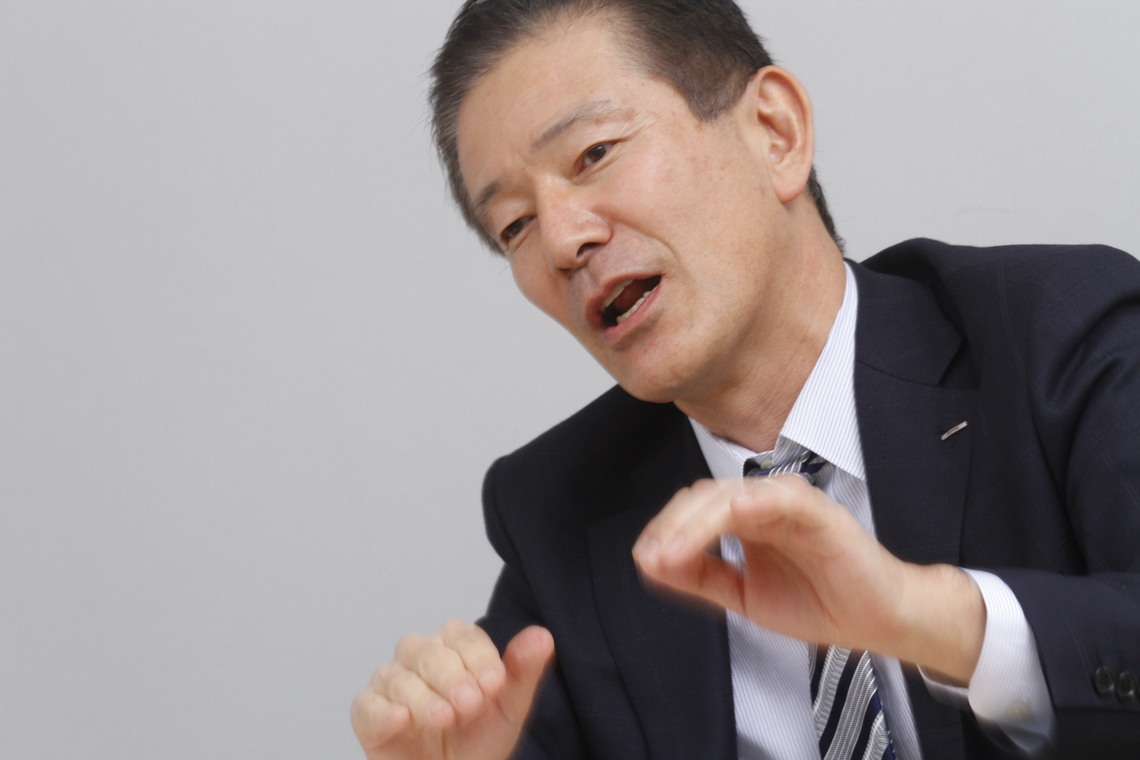Measuring media effectiveness remains elusive. Uemura from the Digital Business Bureau candidly acknowledges the difficulty of accurately gauging consumers who seamlessly move between online and offline spaces. Meanwhile, Oku from DENTSU SOKEN INC. emphasizes, "Even so, presenting new advertising metrics is a necessity demanded by both clients and the times." How will their discussion deepen?
The Correlation Between Viewership Ratings and Tweet Counts: Not Always Consistent
Uemura: Regarding media effectiveness metrics, there's a trend linking Twitter tweet counts to viewership ratings for both TV and online content.
Okuda: It's true there's a positive correlation between tweet volume and viewership ratings. However, we must note that this correlation can break down depending on the program genre. This past March, during the WBC game against Cuba, we surveyed about 2,500 people who were at home that day. While TBS, which aired the Cuba game, had the highest viewership rating, their program-related online engagement rate—including tweets—wasn't the highest. The competing shows 'Tameshite Gatten' and 'Ii Tabi Yume Kibun' actually had higher rates.
What this means is that the ease of tweeting reactions varies depending on the program content. So, if you have a show with a 10% rating and another with a 20% rating, the ratio of tweets isn't necessarily 1:2. The correlation between ratings and tweet volume isn't that simple.
Uemura: I agree. Even within TV dramas, genres like romance or mystery that demand focused attention leave little room for tweeting reactions. But dramas you can watch while muttering "What the heck is this?" are easier to tweet about. And of course, the correlation between ratings and tweets will differ for programs in completely different genres.
Oku: Many Twitter users are just lurkers, after all. There are far more people watching than those actively commenting. We need to track both sets of numbers.
Another thing that concerns me, especially among younger people, is the trend toward closed platforms, like LINE becoming popular. When we recently analyzed Twitter usage, we found 70% use it openly, 10% use both open and closed, and 20% use it closed only. It really brought home how many people use Twitter, which is great for spreading information, for closed communication too.
Uemura: Sometimes you don't want your friends to know you're watching a show. You might feel embarrassed if they found out you were watching something like this. Naturally, you wouldn't tweet about it, but it still gets counted in the viewership ratings. Conversely, shows you actually watch but wouldn't necessarily tweet about—the ones you'd brag about watching, like "Hey, I'm watching this!"—tend to get tweeted about more.
Oku: With users having these multiple personas, the challenge is how to objectively derive effective metrics.
Uemura: With TV, no matter the screen size, commercials fill 100% of the screen with sound, so exposure is almost equal to awareness. But online, within the browser window, banner sizes aren't necessarily large. So exposure doesn't always equal awareness. In terms of effectiveness, we need to measure awareness, not just exposure volume. Yet online, the effectiveness metrics inevitably become exposure or clicks. Ultimately, we need an intermediate effectiveness metric between exposure and clicks. That means "recognition." Only with that can we truly compare it to TV or other media.
As cloud technology evolves, we can even calculate precise "contribution rates."
Oku: Lately, "attribution" (the factors contributing to changes in the purchasing process; contribution) is often discussed, right? Does this fill the gap between exposure and clicks that Uemura-san mentioned?

Uemura: If we compare online user purchasing behavior to soccer, there's the concept of "passing the ball around," right? Even if they ultimately buy on Amazon or Rakuten, before that, they search on Google, check prices on comparison sites, and visit various places before reaching the purchase site. But currently, the focus is only on the final goal scene—the advertising effectiveness of the site where the purchase happened. Yet, before the header goal, there might have been a corner kick or some exquisite passing. That's attribution, right? Measuring this attribution is where online media excels. But if you really think about it, the push to buy could have come from TV, magazines, or even outdoor ads. Even if the final purchase was made via smartphone e-commerce, mass media likely contributed. Or maybe the final goal was buying at a big-box store just to get points.
Recently, there's also the concept of "integrated attribution" (unifying the contribution of mass and online advertising to purchases). But in reality, as consumers move back and forth between online and offline, real and digital, it's becoming increasingly difficult to precisely allocate effectiveness to each individual medium.
Oku: However, from the client's perspective, we've definitely entered an era where presenting effect metrics based on certain hypotheses is necessary. Traditionally, with TV, we could only gauge whether people saw it or not, liked it or disliked it, remembered the commercial or not – we couldn't say whether it led to actual purchase behavior. Conversely, online allows us to see if someone clicked and if they actually made a purchase. Within this shift, we must also consider attribution.
One crucial element we mustn't forget is brand awareness. There's the aspect of getting people to know the brand and grow to like it. Actually, that's where the difference in roles between online and the four major mass media lies. If we demanded mass media always deliver results like scoring goals in that soccer analogy, it would be a bit harsh. You still need to cultivate the field. If you only harvest constantly, potential customers won't grow. It's about balance. For clients, I think we need to be able to propose both the long-term effects and the short-term scores, like this week's sales.
Uemura: If you keep narrowing your target to chase high click-through rates, the market shrinks. It looks efficient, but brand awareness and business don't expand. You have to broaden your reach, even if it means sacrificing click-through rates, to capture potential customers.
Oku: And, though this is a bit further down the road, if various media connect to the cloud and we can reliably capture that cloud data, it might become possible to measure attribution quite effectively, including for mass media.
Uemura:In the second session, we discussed smartphones becoming remote controls. If that happens, we could theoretically track exactly which TV programs and commercials people watched. Then, if they make purchases via smartphone or convenience store payments, all the purchase behavior data could, in theory, be captured.
Oku: You'd get a complete block of purchase data and media exposure data. If media evolves like that, integrated attribution could literally become a reality. Plus, we might develop communication templates showing optimal paths – whether TV or radio comes first, or how taking two or three shortcuts is easier than many passes.
Uemura: If we reach that point, it could become the ultimate effectiveness metric. There's still plenty of room for our research.
[ To be continued ]







